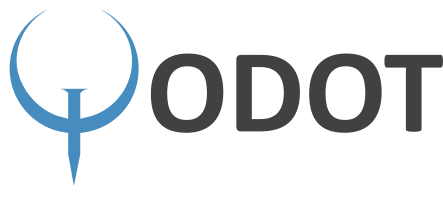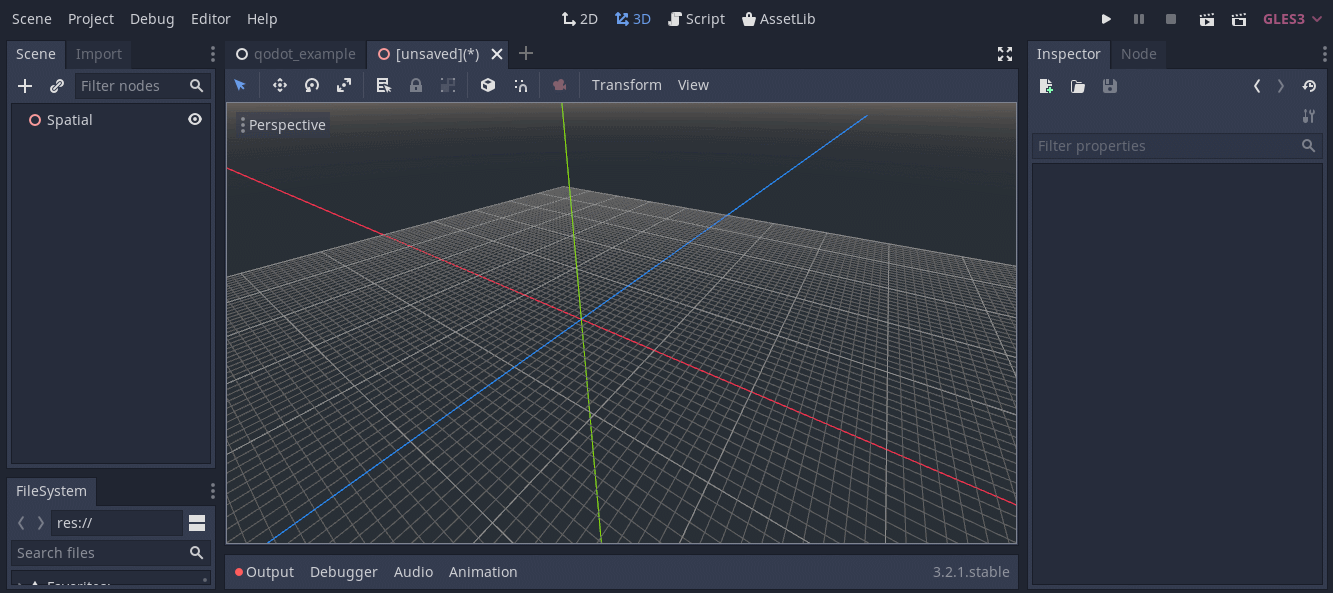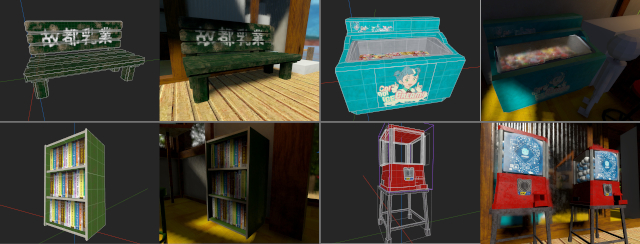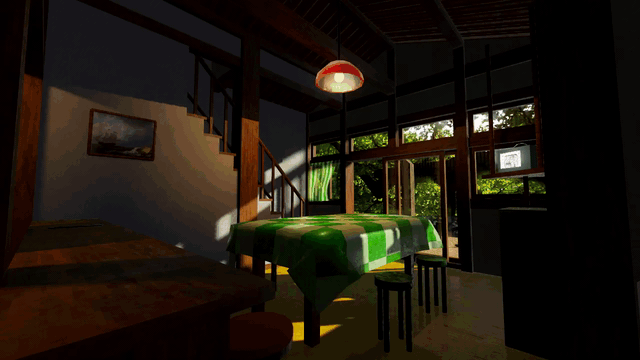98 lines
5.4 KiB
Markdown
98 lines
5.4 KiB
Markdown

|
|
|
|
Quake *.map* file support for Godot 4.x. **For the original Godot 3.x plugin, see [Qodot-Plugin](https://github.com/QodotPlugin/qodot-plugin/).**
|
|
|
|
# About this version
|
|
|
|
Latest Tested Engine Version: **4.2 rc1**
|
|
|
|
Unlike [Qodot-plugin](https://github.com/QodotPlugin/qodot-plugin/), this [Qodot](https://github.com/QodotPlugin/Qodot/) repository is currently the official version of the plugin and where active development continues. You can also find the plugin on Godot's Asset Library.
|
|
|
|
## Documentation
|
|
|
|
We have official [Qodot Documentation](https://qodotplugin.github.io/). The docs are undergoing maintenance, so feel free to ask questions in [Issues](https://github.com/QodotPlugin/Qodot/issues) or the [Official Discord](https://discord.gg/c72WBuG).
|
|
|
|
## Overview
|
|
|
|
Qodot extends the Godot editor to import Quake *.map* files, and provides a data-driven framework for converting the entities and brushes contained therein into a custom node hierarchy.
|
|
|
|

|
|
|
|
## Features
|
|
|
|
- Natively import `.map` files into Godot and convert them into a usable scene tree
|
|
- Supports
|
|
- Brush geometry
|
|
- Textures and customized UVs
|
|
- Convex and concave collision volumes
|
|
- Gameplay entities
|
|
- FGD (Forge Game Data) export for custom game definitions
|
|
- Configurable scene population
|
|
- Leverages the map format's classname and key/value property systems
|
|
- Spawn and configure custom Godot scenes and scripts based on entities defined in the map editor
|
|
- Define the visual and collision properties of brush entities on a per-classname basis
|
|
- TrenchBroom Integration
|
|
- Simple, intuitive map editor with a strong feature set
|
|
- TrenchBroom game configurations can be exported for tighter workflow integration
|
|
- Nested TrenchBroom groups can be used to build a tree hierarchy from the format's standard flat structure
|
|
|
|
## Showcase
|
|
|
|
[](https://raw.githubusercontent.com/Shfty/qodot-extras/master/showcase/sunkper-props.jpg)
|
|
|
|
Assorted props by [@SunkPer](https://twitter.com/SunkPer)
|
|
|
|
[](https://cdn.app.com/attachments/651209074930876416/659427504309796876/Project_Summer_Island_WIP_25.mp4)
|
|
|
|
Summer Island by [@SunkPer](https://twitter.com/SunkPer)
|
|
|
|
## Thesis
|
|
|
|
Qodot was created to solve a long-standing problem with modern game engines: The lack of simple, accessible level editing functionality for users without 3D modeling expertise.
|
|
|
|
Unity, Unreal and Godot are all capable of CSG to some extent or other with varying degrees of usability, but lack fine-grained direct manipulation of geometry, as well as per-face texture and UV manipulation. It's positioned more as a prototyping tool to be used ahead of a proper art pass than a viable methodology.
|
|
|
|
Conversely, dedicated 3D modeling packages like Maya or Blender are very powerful and can iterate fast in experienced hands, but have an intimidating skill floor for users with a programming-focused background that just want to build levels for their game.
|
|
|
|
Enter the traditional level editor: Simple tools built for games like Doom, Quake and Duke Nukem 3D that operate in the design language of a video game and are created for use by designers, artists and programmers alike. Thanks to years of community support, classic Quake is still alive, kicking, and producing high-quality content and mapping software alike. This continued popularity combined with its simplicity means the Quake *.map* format presents a novel solution.
|
|
|
|
## Extra Content
|
|
|
|
[The Qodot extra content repository](https://github.com/Shfty/qodot-extras) contains a set of additional resources, such as map editor plugins, logo graphics, showcase content and screenshots.
|
|
|
|
## Qodot Elsewhere
|
|
|
|
[Discord - Qodot](https://discord.gg/c72WBuG)
|
|
|
|
[Reddit - Qodot](https://www.reddit.com/r/godot/comments/e41ldk/qodot_quake_map_file_support_for_godot/)
|
|
|
|
[Godot Asset Library - Qodot 3.x](https://godotengine.org/asset-library/asset/446)
|
|
|
|
## Credits
|
|
|
|
[Josh "Shifty" Palmer](https://twitter.com/ShiftyAxel) - Original Qodot plugin
|
|
|
|
[Hannah "EMBYR" Crawford](https://embyr.sh/) - Godot 4.x & ~C#~ GDScript port & maintainance
|
|
|
|
[Emberlynn Bland](https://github.com/deertears/) - Starting the docs & community support & maintenance
|
|
|
|
[Kristian Duske](https://twitter.com/kristianduske) - For creating TrenchBroom and inspiring the creation of Qodot
|
|
|
|
Arkii - For example code and handy documentation of the Valve 220 format
|
|
|
|
[TheRektafire](https://github.com/TheRektafire) - For a variety of useful tidbits on the .map format
|
|
|
|
[Calinou](https://github.com/Calinou) - For making Qodot work on case-sensitive systems
|
|
|
|
[SunkPer](https://twitter.com/SunkPer) - For showcase screenshots
|
|
|
|
[lordee](https://github.com/lordee), [DistractedMOSFET](https://github.com/distractedmosfet) and winadam- For laying the groundwork of the FGD export and entity scripting systems.
|
|
|
|
[fossegutten](https://github.com/fossegutten) - For a typed GDScript pass
|
|
|
|
[Corruptinator](https://github.com/Corruptinator) - For the idea of using TrenchBroom groups as a scene tree.
|
|
|
|
[grenappels](https://github.com/grenappels) - For implementing smoothed brush normal edge splitting
|
|
|
|
[FreePBR.com](https://freepbr.com) - For royalty-free PBR example textures
|